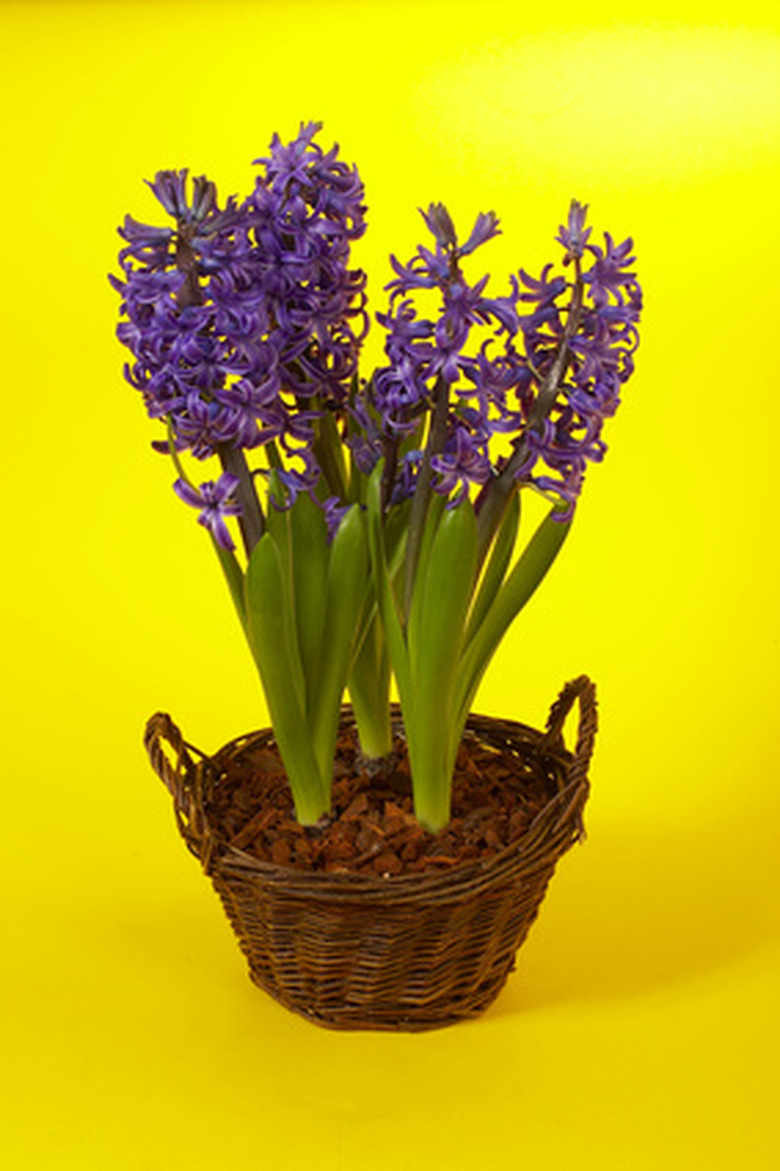Common Mold Problems With Forcing Hyacinth Bulbs
The moist conditions necessary for forcing hyacinth bulbs can encourage the proliferation of mold. These mold spores are not caused by the moisture however. If mold develops on your forced hyacinth bulbs, spores were already present on the bulbs or storage container. Check newly-purchased bulbs for mold spots before you take them home. Clean your storage containers with bleach before you use them each season. If your bulbs develop mold during forcing, throw them away.
Blue Mold
Blue mold is a common hyacinth bulb mold. It may cause the bulb to turn soft, pink or soft and rot in the container before it has a chance to germinate. Or, if the bulb does produce, the resulting plant may develop root rot in the now-infected soil and die. Throw away bulbs that have developed blue mold immediately.
- The moist conditions necessary for forcing hyacinth bulbs can encourage the proliferation of mold.
- If your bulbs develop mold during forcing, throw them away.
Grey Mold
Grey mold is caused by a common soil fungus. This fungus is highly contagious and can be spread by splashing water or even by plant foliage simply touching moist, infected soil. Infected hyacinth bulbs will develop spots that look water-logged. Affected bulbs should be thrown away.
White Mold
White mold is caused by a soil-borne fungus that survives out of the soil by feeding on bulbs. Bulbs infected with the fungus that causes white mold will have dark, hard scab-like patches attached to them. After the bulb germinates, the mold will attack hyacinths' leaves. The symptoms are grey or yellow sunken spots on the foliage that grow larger as the mold multiplies or powdery white mold patches on the underside of the leaves.
- Grey mold is caused by a common soil fungus.
- After the bulb germinates, the mold will attack hyacinths' leaves.
Save Hyacinth Bulbs
Fertilize your potted hyacinth once during the bloom, and once after the flowers have faded. Use bone meal or a fertilizer made especially for bulbs. Water regularly until the foliage turns yellow, and then let the pot go dry. Allow the foliage to die back naturally, but cut back the wilted flowers with scissors to support bulb vigor. Separate the bulbs from the soil in late summer. Spread newspaper on an even surface and empty the pot's contents onto it. Chill the hyacinth bulbs in the fridge for four to six weeks, stored in a breathable paper or cloth bag. In warmer areas, plant from October to mid-November. Place the root end of a bulb (pointy end up) in a hole that is 4 to 5 inches deep. Water whenever less than 1 inch of rain falls in a week during the growing season.
- Fertilize your potted hyacinth once during the bloom, and once after the flowers have faded.
- Place the root end of a bulb (pointy end up) in a hole that is 4 to 5 inches deep.
References
- University of Idaho Extension: Bulb Flowers, Care and Maintenance
- University of California: Floriculture and Ornamental Nurseries Narcissus (Narcissus spp.)
- Sunset: Comeback Bulbs
- Marin Master Gardeners: Gardener's Checklist for Fall
- Sunset Garden Book; Kathleen Norris Brenzel, editor
- Sloat Garden Center: Planting Bulbs!
